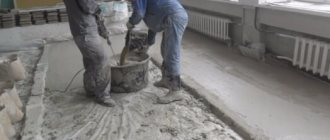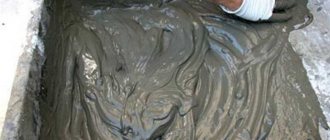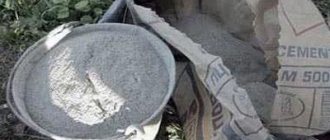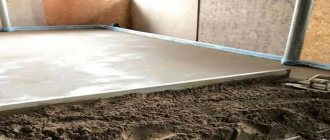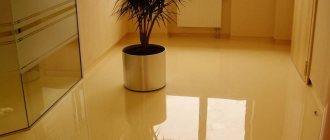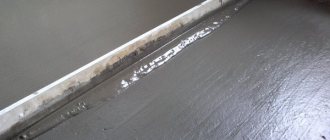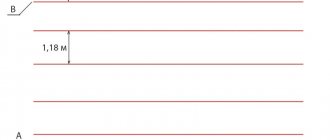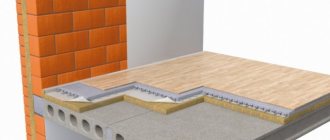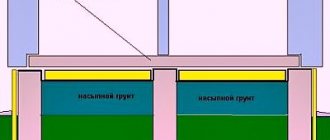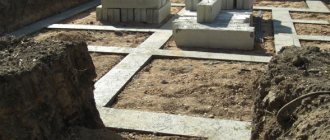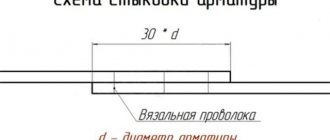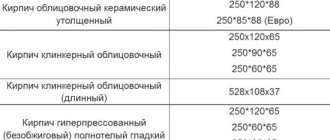Barite floor screed
Calculate the required number of bags.
Barite screed is a building-cement material that is used to provide a shielding effect for horizontal ceilings and surfaces in rooms containing a source of ion and X-ray radiation. Usually used in conjunction with barite plaster. This material can also be applied in domestic premises in order to reduce the influence of the natural background radiation of the environment.
Barite floor screed: main characteristics.
Our company is a manufacturer and supplier of a full range of X-ray protective equipment and materials to ensure the safety of employees and visitors in medical, industrial, and research institutions. In addition to protective structures, we also offer to purchase bulk building materials, namely, buy barite screed and plaster for X-ray rooms.
Main characteristics of barite floor screed:
- In addition to everyday cement and sand, the composition contains barite concentrate or barite concentrate, which provides protective functions.
- In digital protective equivalent, a layer of 10 mm of screed is equal to 1 mm of lead (the value may vary, taking into account the voltage on the X-ray tube. The specified characteristics correspond to a voltage of 75 kV)
- The method of application is similar to the installation of a general construction analogue.
- Does not crack during drying, strong and durable material.
- Barite screed is NOT toxic
- The average consumption of screed per 1 m2 of surface, with an application thickness of 10 mm, is 22 kg.
- The material can be used within temperature limits from +5 to +35 degrees.
How to work with barite screed.
In order to correctly install a barite screed on the floor of the X-ray room, you must first familiarize yourself with the technology of its use. Our experienced repair specialists will easily cope with the tasks, thereby eliminating for you all possible problems associated with the search for workers and the quality of both the material itself and its installation.
So, the basic procedure for working with barite screed “HYDROCEM BARITE”:
- To prepare the solution, you need to mix one bag of dry material with water in an amount of about 4.5 liters.
- Guides are installed on the entire floor surface of the room.
- The distance between the guides depends primarily on the size of the rule or the footage of the cabinet itself.
- The prepared barite screed solution is evenly distributed over the strips, additionally leveling the surface with the rule.
- To ensure maximum protective characteristics of the surface, the beacons must be carefully removed before the solution has completely hardened.
- Fresh solution is poured into the resulting voids and must be leveled to obtain an ideal surface without grooves.
Advantages of using barite screed:
- Durability.
- Non-flammability.
- Reliable protection of the floor from the leakage of ion radiation into adjacent rooms.
- Ease of use.
- Strength.
- Versatility.
- Plastic.
Dry mixes
You can prepare the solution yourself, or you can buy a ready-made mixture. The building materials market is rich in such offers. They are simple to use - just like when creating a regular solution, water is added to the dry ready-made mixture - all the necessary components are already mixed in the required proportions, often with the addition of plasticizers. These substances can reduce water consumption without losing the quality of the solution.
Dry mixes for screed
Attention! Any solution must be mixed using a construction mixer.
Where to buy barite floor screed in St. Petersburg.
In order to order a barite screed or any other product manufactured by our company, in addition to the contact information and payment details of your organization, you must indicate the following:
- Amount of material required. If necessary, our consultants will help you make the right decision, taking into account the area of the room, the layer of the mixture, the desired protective parameters, etc.
- Are additional services necessary: installation of the mixture itself, application of plaster, installation of X-ray protective doors, shutters, windows, etc.
- Pickup will be carried out from our warehouse, or place and method of delivery. We sell barite plaster with delivery to all cities of Russia, as well as to Belarus and Kazakhstan.
To order products, you can contact us in any way most convenient for you, among those indicated in the contact information on our website.
Composition of mortar for floor screed
Article published by: Nikolay Strelkovsky
In order for the finishing floor covering to serve as long and efficiently as possible, before installing it, it is necessary to properly prepare the base: the surface should not have depressions, protrusions or horizontal differences. The screed allows the above requirements to be met.
Composition of mortar for floor screed
If desired, you can handle all the necessary measures for pouring the floor screed on your own. However, before starting the work in question, you need not only to understand the procedure for preparing the solution, but also to study the nuances of determining its optimal composition depending on the place of application and other significant parameters.
DIY cement screed
All work on pouring this type of screed involves several stages of work. Let's look at the process in detail.
Floor screed device
Step 1. The very first - the preparatory stage - includes preparing the necessary tools and clearing the base of debris. To create a screed, you should prepare a building level, a long rule, spatulas, containers for the mixture, beacons, a construction mixer and the construction mixture itself. All necessary calculations are also made in advance, because if there is a shortage of solution, you may not have time to buy more. Because of this, all the ingredients of the mixture are purchased with a small reserve. The surface is prepared very simply - it is cleaned of debris, dust, old coating (if any), all cracks are sealed. In some cases, it is recommended to treat the surface with a primer to improve adhesion.
Preparing the base
On a note! If you plan to lay waterproofing material, the surface is not treated with a primer. The waterproofing layer is laid with an overlap of approximately 20 cm on the walls, the excess is then cut off. As an option, you can use waterproofing mastic instead of rolled materials. It is also recommended in any case to tape the perimeter of the walls with damper tape.
Step 2. Using a building level, the slope of the base is determined. This is necessary for proper installation of beacons. Using a level, markings are applied to the walls, measuring the distance from which to the level of the rough foundation, it is possible to calculate the slope of the floor. In general, knowing the height difference is necessary in order to accurately calculate the mixture consumption, because if the slope is significant, then more solution will be required. After this, beacons are installed along the level, which will then help level the screed layer, although their installation is not always necessary. When the rule is carried out around the room according to the beacons, the places where there is not enough solution are easily calculated - it is simply added there.
How to set beacons
Installation of beacons
So, the beacons are installed approximately 50-70 cm apart from each other along a long wall, but so that the distance between them is not greater than the length of the rule. The basis for them are pieces of cement mortar. Beacons must be located on the same level! After their installation, the cement bases must dry for 2 days.
Beacons must be located on the same level
On a note! After the screed has hardened, the beacons are often removed, but this procedure is not necessary if a self-leveling mixture is applied to the surface at the end of the work.
Step 3. Only after the previous procedures is the solution mixed in a concrete mixer or any other container using a construction mixer. First, all the dry ingredients are mixed, then water is gradually added to them. Do not stir the whole mixture at once! The solution is applied to the surface, starting from the far corner of the room. The rule relies on the beacons and moves along them - this is how the screed is leveled by removing excess mortar and calculating the places where it needs to be added.
Pouring cement-sand screed
Important! During work on pouring the screed, the temperature in the room should be above zero (from +5 to +30 degrees).
Step 4. In this way, the entire base is poured and leveled. The screed is ready.
Ready-made floor screed
Installation of cement-sand screed, part one
Installation of cement-sand screed, part two
Video - Filling the floor screed
Video - Leveling the floors yourself
General information about the composition of the screed solution
The process of preparing mortar for floor screed
The process of preparing a solution for floor screed comes down to thoroughly mixing certain components in prescribed proportions. The most versatile and frequently used are cement-based mixtures: they are not afraid of moisture, which allows you to pour such solutions in any room.
The main disadvantage of cement mortars is their tendency to shrink, which has fairly high rates. Therefore, if the solution is poorly mixed and laid in a thin layer, the surface is likely to become covered with cracks. In order to prevent cracking, the screed is made using reinforcing mesh. In addition, special strengthening components can be included in the solution.
The composition of the cement floor screed is given in the following table.
Table. Composition of mortar for floor screed
When choosing the proportions of the screed solution, it is necessary to take into account the operating characteristics of the room in which the finishing work will be carried out. For example, if the floor will be subjected to intense loads and strong mechanical stress, it is recommended to use 1 share of cement and 3 shares of sand to prepare the solution. With this ratio, the screed will be strong and quite reliable.
The proportions of the solution depend on the purpose of the room
In general, the composition of the mixture can be adjusted by decreasing or increasing the proportion of one or another component. But it is important to know that as the sand content decreases, the strength of the screed will also decrease - such a coating will quickly become covered with cracks, lose its performance characteristics and collapse.
The screed may crack if there is too little or too much sand in the mixture.
For residential premises with low and medium loads, solutions consisting of 1 part of cement and 4 parts of sand are usually used. The amount of other components is selected practically until a mixture of normal working density is obtained or in accordance with the manufacturers' recommendations. This composition allows you to obtain a fairly high-quality solution for laying screed. At the same time, it is also impossible to add too much sand to the mixture, because... Because of this, the strength properties of the coating will be compromised and the filling will collapse quite quickly.
As for the reinforcing fiber, it is added in an amount of about 0.6-0.9 kg per 1 m3 of the finished solution. The required proportion of plasticizer should be clarified individually - manufacturers provide this information in the instructions for their products. Water, if you adhere to the given proportions of other components, will need to be added in an amount of about 15 liters for every 50 kg of cement.
FIBAR-fiber fiber made of polypropylene
Plasticizer for concrete Plitonit
In addition to cement screeds, special gypsum mortars are often used. As a rule, they are used to eliminate small irregularities in conditions where there is no time to wait for the cement screed to completely harden. Anhydride mixtures can be laid in a thin layer, and they dry on average in 1-3 days, which significantly facilitates and speeds up the work process. The only limitation: gypsum screeds are not suitable for use in rooms with high air humidity.
If desired, both cement and gypsum compositions can be purchased ready-made, with all the necessary plasticizers and other additives. Manufacturers often introduce special modifiers into their mixtures that improve various properties of the screed, for example, increasing its fluidity and facilitating the installation process. However, under any circumstances, you will have to spend more money to purchase a ready-made mixture than to purchase the initial components separately and prepare the solution yourself.
Additives to concrete
The choice of proportions depending on the brand of raw materials and the finished composition
When determining the optimal composition of the mortar for the screed, you must, first of all, focus on the indicator of the grade of cement, as well as the required grade of the finished mortar - the higher the latter indicator, the stronger and more durable the screed will be. Information regarding these points is given in the following table.
Table. Proportions of mortar for screed
Important! To fill the screed, it is strongly recommended not to use a solution of a grade lower than M150 - it may not hold up. In most cases, in home construction, a mixture of the M200 brand is used.
Kinds
Classification according to operating conditions
- Mixture for air-dry operating conditions. Most often in this case, mortars based on lime binder are used; they have high plasticity and adhere well to brick. Lime mixtures harden for a long time, releasing water in the process, which creates some inconvenience during construction work.
- For wet operating conditions. The binder is slag Portland cement or Protland cement. They do not allow moisture to pass through, so they are used in underground parts of structures. You can mix cement mortars with lime mortars, then they will have high strength and ductility, frost resistance and workability, and are suitable for the construction of above-ground and underground parts of the building.
Classification according to the type of binder included in the composition
- Gypsum masonry mortar. It sets and hardens quickly, it is an environmentally friendly composition. It has low strength and moisture resistance. It is used mainly for finishing work and in the process of creating decorative elements.
- Lime mortar. Used for laying bricks, blocks and natural stone. The mixture is easy to install, it is strong, durable, and plastic. During operation, the mortar does not crack.
- Cement mortar. It is used more often than other mortars in the process of masonry work; it can also be used as a floor screed and when plastering rooms. Unlike concrete, cement masonry mortar contains crushed stone of smaller fractions.
- Mixed masonry mortar. Contains a combination of the above materials.
Classification by area of application
- Universal solution. It is used in brick, stone masonry and building block masonry.
- Special. They are used for the construction of stoves, chimneys, and any tanks.
- Color. Acts not only as a connecting material, but also as a finishing material.
Calculation and preparation of solution
It is necessary to correctly determine the quantity of required mixture components before delivering them to the construction site
When calculating the required amount of mortar for pouring the screed, follow the sequence below:
- determine the required volume of building mixture. To do this, measure the floor area and multiply the resulting value by the thickness of the layer being installed. For example, your floor area is 30 m2 and you are pouring a 7 cm thick screed. In this case, you will need: 30x0.07 = 2.1 m3 of solution;
- determine the required amount of cement and sand. For example, you prefer a mixture that includes 1 share of cement and 3 shares of sand. In this example, you will need approximately 0.53 m3 of cement and 1.57 m3 of sand. A cubic meter of cement weighs approximately 1.3 tons. Therefore, you will need: 1.3 x 0.53 = 690 kg of cement.
Technical characteristics and advantages of the mixture
Cement mortar M150 is an environmentally friendly substance.
It is resistant to open flames and has the following characteristics:
- tensile strength - more than 3 MPa;
- for compression - 15 MPa or more;
- beginning of hardening - 40-60 minutes after installation;
- complete hardening - after 1 month.
The characteristics of the mixture can be changed by adding various chemicals to it.
At the same time, the plasticity and homogeneity of the solution are preserved.
The advantages of the mixture include:
- the ability to obtain an even layer without chips and cracks;
- high strength of the dried layer;
- uniform density;
- high frost resistance.
The ratio of cement and sand in floor screed mortar
The solution at home for household needs without significant requirements for the characteristics of the screed can be prepared very frivolously. The “folk” technology for preparing mortar for floor screed creates a deliberately greater safety margin than is necessary. The specific composition for the floor screed in this case is also not critical. It can include a lot of different ingredients: gravel, crushed stone, sand, ASG, expanded clay, shavings, etc. And if it is made with minimal adherence to technology and proportions, it will last for many years.
"People's" technology
Approximate ratio of cement and sand for the most common grades of cement.
Many people don’t really think about what kind of solution is needed to screed the floor. ...And the poured floor fulfills its functions. For this:
- Mix the mixture in any way (concrete mixer, drill with a mixer attachment, manually in a bath, etc.). Take approximately 1 to 3 parts of any sand (construction sand, screenings or ordinary river sand), add 1 part cement (the most common is M-400 or strength class B30). Mix dry first.
The sooner you use the solution, the better.
However, such an approximate technology does not guarantee the strength of the floor, the absence of cracking, etc. With a large amount of cement, the mortar is stronger, but it dries faster and is more difficult to level, and the final quality deteriorates. By increasing the amount of sand, the setting time increases, but the final strength decreases. Thus, by varying “by eye” you can make a significant mistake. It is better to follow the recommendations given by experts. But this is a “folk” technology without special requirements.
Features of using sand-cement mixture M150
M150 is the most common solution that is used for:
- sealing seams and joints;
- preparing surfaces for gluing or painting;
- pouring foundations;
- making floor screeds;
- plastering walls.
Cement-sand mortar M150 includes cement, sand and water. It hardens within 3-4 hours.
Portland cement, obtained from limestone stone, is used as the main binder. Used at ambient temperatures +5…+30˚С. The solution is applied to a surface cleaned of dirt and foreign objects.
Option for masonry cement grade 150.
Preparation is carried out as follows:
- the dry mixture is poured into a container and mixed;
- water is added and mixing continues.
The dry mixture can also be poured into water poured into a container for preparing the solution, and then diluted with water.
To obtain a homogeneous solution, it is recommended to mix it with a mixer, which is inserted into an electric drill. Due to rapid hardening, the mixture is prepared in small portions.
Requirements for the solution
It’s a completely different matter when strict requirements are imposed on the base of the floor: static and dynamic loads, wear resistance, etc. The customer can also include in the contract a footnote to the requirements of SP 29.13330.2011 (previously SNiP 2.03.13-88).
In most cases, the screed is made on the basis of cement-sand mixtures (CPS). This is the most universal method. For floors made on the basis of cement mortar, fairly high operational requirements are met at minimal production costs. How to make a mortar for floor screed based on sand and cement, observing building regulations, will be discussed here. In the case of home preparation, the above rules can be followed approximately.
Basic requirements of regulatory documentation
- To level surfaces and cover pipelines, the compressive strength of the screed must be at least 15 MPa;
- For self-leveling polymer coatings – at least 20 MPa;
- The screed layer on top of various thermal insulation is at least 20 MPa;
- The thickness of the screed is at least 1.5 times the diameter of the maximum filler;
- Peel adhesion strength after 28 days is not less than 0.6 MPa. After 7 days, at least 50% of the design value;
- The compressive strength of porous screeds is at least 5 MPa.
TOP 3 best manufacturers of dry mixes for screed
| Photo | Name | Rating | Price | |
| #1 | Perfecta | ⭐ 96 / 100 | More details | |
| #2 | Bolars | ⭐ 95 / 100 | More details | |
| #3 | Rusean | ⭐ 94 / 100 | More details |
Perfecta
Recommended for preliminary leveling and installation of a durable and reliable floor, used under conditions of low and moderate loads.
Perfecta
pros
- special reinforcement of the base screed with fiberglass;
- suitable for heated floors;
- environmentally friendly;
- easy installation;
- suitable for any base;
- maximum layer 120 mm;
- high frost resistance of the material;
- solution viability 120 minutes.
Minuses
- only tiles should be laid on top (for laying other floor coverings, the surface is sanded or leveled with self-leveling floors);
- cannot be laid at low temperatures.
floor screed Perfecta
Bolars
Suitable for rooms with any level of humidity, as well as foundations subject to significant temperature fluctuations and increased operating loads. It is used for filling floors manually and by machine.
Bolars
pros
- does not shrink and leaves the layer height;
- hardens quickly;
- compatible with heated floors;
- maximum layer up to 100 mm;
- it is allowed to lay the screed directly on the ground, wood, concrete;
- Suitable for most floor coverings.
Minuses
- the cost is above average;
- viability of the finished solution is 60 minutes;
- afraid of low temperatures.
Bolars floor screed
Rusean
Rusean floor screed is a highly effective, economical material based on cement binder, coarse sand (grain size up to 5 mm) and chemical additives.
Rusean
pros
- suitable for manual mixing;
- low mobility of the dissolved mixture;
- maximum layer up to 150 mm;
- suitable for heated floors;
- The screed can withstand frost down to -35 degrees;
- packaging up to 40 kg.
Minuses
- subsequent sanding of the floor is required to cover it with finishing material;
- high consumption;
- Complete drying time (for laying floor materials) is about 10 days.
floor screed Rusean
